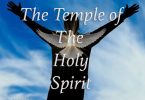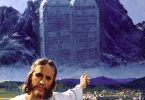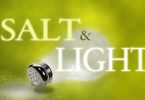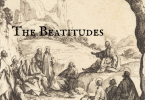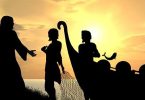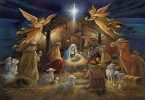14th Sunday of the Ordinary Time 23942526
Scripture: Zech. 9:9-10; Ps. 144:1-2, 8-11, 13-14; Rom. 8:9, 11-13; Mat. 11:25-30
After the independence of America in 1776, people began to come to the land of freedom. They wanted peace and freedom. These people came from different parts of the world. They had a lot of hope in the land of America. It is estimated that between 1820 to 1920, there were almost 34 million people who reached the shores of America. Out of which the only ¾ stayed back and ¼ returned to their homeland. The Americans began to think that these people should have something to give them confidence. In collaboration with the French government, they decided to put a beautiful monument. It is known as the Statue of Liberty. What is interesting to know that there is a poem which is inscribed on the foundation that is known as ‘the new colossus’. It was written by Emma Lazarus, a Jewish – American Poet. It says, “Give me your tired, your poor, your huddled masses yearning to breathe free. The wretched refuse of your teeming shore. Send these, the homeless, tempest – test to me. I lift my lamp beside the golden door.” Whoever came to the harbour of New York, fixed their gaze to this statue and found the confidence to live in America. The statue became the sign of hope in the midst of uncertainty to the people who came to America for living.
Today’s liturgy also talks about hope in the most challenging situation. Prophet Zechariah in the first reading consoles the people of Israel who were living in Palestine under the yoke of Greeks. Alexander the Great had conquered Judah in 333 BC. Israelites had already gone through the persecution of Egyptians, Assyrians and Babylonians. It was painful for Israelites to live in the bondage. They were tired of slavery, torture, agony and burden. They wanted political freedom. They were waiting for someone who would liberate them from bondage. They always aspired for the leadership of King David who had brought them together and gave them peace from the hostile neighbours. Prophet Zachariah who lived at the time gives the people of Israel hope i.e. the promise of a king. He says that the king would come on a donkey. The ride of a king on a donkey means that the king would rule with justice. His kingdom will have stability and peaceful days of rest. The King would not be a warrior king who comes on horseback or in a chariot to rule over them. He would be meek and humble of heart. The image of a king became a sign of hope to the people of Israel during the bondage of Greek.
At the time of Jesus, the ruling empire was changed. The Greeks were nowhere in the picture but the agony had increased. The Israelites were suffering from double slavery. On one hand, the Romans were ruling over Israel. They extracted money in the form of heavy taxes. It had become a burden. King Herod had become the puppet king. And on the other hand, the priests, the Pharisees and the scribes had become the second rulers. They had made God inaccessible and impossible to follow. The temple had become a burden instead of hope. In such a hopeless situation; Jesus says, ‘Come to me, all who labour and are heavy laden and I will give you rest. Take my yoke upon you, and learn from me for I am gentle and lowly in heart and you will find rest for your souls. Yes, my yoke is easy and my burden light”.
Let us meditate a little more on the saying of Jesus. Firstly, Jesus invites us especially those who sincerely seek God, justice and truth and desperately trying to do good in their lives. He promises us rest. The ‘rest’ means not a life of ease but a deliverance from the artificial burden of religion. Secondly, Jesus puts conditions to get the rest i.e. to take his yoke and learn from him. The imagery of a yoke was common to the people of Palestine. Jesus was also familiar to the yoke because he must have worked on it as a carpenter. Carpenters made yokes according to the size of the animals. And unfit yoke created discomfort for animals. Jesus offers His yoke which is easy to carry. It would be a double yoke where two oxen work together. It means Jesus promises to walk with us. Jesus and His follower yoke together is comforting imagery because wherever we go, Jesus follows us. The yoke was a symbol for the Jewish tradition a servitude or obedience. It was in contrast to a rabbinic yoke of the Torah. By this invitation, Jesus wants us to come into a relationship with Him.
The prophecy made by Zechariah many years ago was fulfilled in Jesus Christ. It was complemented by Jesus’ action when he cured the crippled, blind, deaf and dumb, possessed, paralytic and raised the dead. Therefore, large crowds followed Jesus from Galilee, the Decapolis, Jerusalem and Judea and from beyond Jordan (Mt. 4:25). The world that surrounded Israel followed Jesus because He had become a sign of hope to the people in this region.
Jesus continues to be the sign of hope to us in this trying and testing moments. There are many witnesses that made Christ, the hope in the most challenging times. We are in the most difficult situation in history. This period will be recorded in our human history for eternity. Christ wants us to make himself known to the people in need as the hope of the world. How is it possible? What should we do to make Christ the hope of the world in the most difficult and testing times?
St. Paul answers our question. He tells us that we could be two different types of people. People who live in the flesh and people who live in the spirit. People who live in the flesh are the ones who try to think about themselves. They believe in their own capacity and merits. They are not ready to think about others. On the other hand, there are people who live in the spirit, they surrender completely to God and ask God’s intercession in everything that they do. They reach out to many without reserving anything for themselves.
The Catholic Church in India has worked silently during the pandemic. Caritas India, the official development arm of the Catholic Church in India, carried out massive relief work. As per reports, till the end of May, its contribution included: support to 10 million-plus people, food supplies to 7.2 million-plus, masks to 2.8 million-plus, sanitizers to 600,000 plus, and support to 500,000 plus migrants, and 286 community kitchens—all these with the support of nearly 50,000 volunteers. There are individual diocese and religious congregation that have reached thousands of people.
Our Diocese of Sindhudurg has reached out to thousands of families. Our social centre which headed by Fr. Melvin Pais has given to more than 1000 food kits to the poor and needy. He has provided sanitizers, masks to the remotest places in our district. The Catholic Church in India has worked tirelessly to make Christ the hope in these trying moments. Those who contributed to the work are the people who live by the spirit. They work to make Christ present in the lives of people. Christ is our hope and we need to make it known to people who are in needs. May this Holy Eucharist make us aware of our responsibility in the mission of the Church.
Extra anecdote:
They wanted to know about today’s situation of America, so I visited a website which would give me details about it. I found one on American Psychological Association (APA). It is the largest organisation represents psychology in USA. Its working staff is 130, 000 members. They are counsellors, clinical psychiatrics, students, researchers, etc. It revealed its survey in 2007. It said, stress is a major health problem in the US. More than 48% people are under stress. The sources of this stress are money, work and the broken relationships. As a result, people suffer from ulcers, asthama, blood pressure and different sorts of cancer. America spends more than 64.9 billion dollars a year to deal with stress. In such changing situation, is there anything that consoles us? Perhaps today’s liturgy answers to our question.

